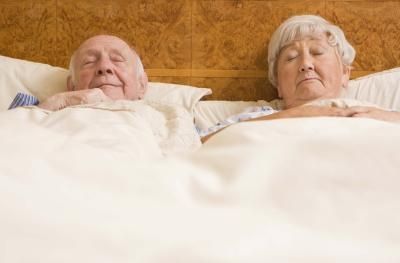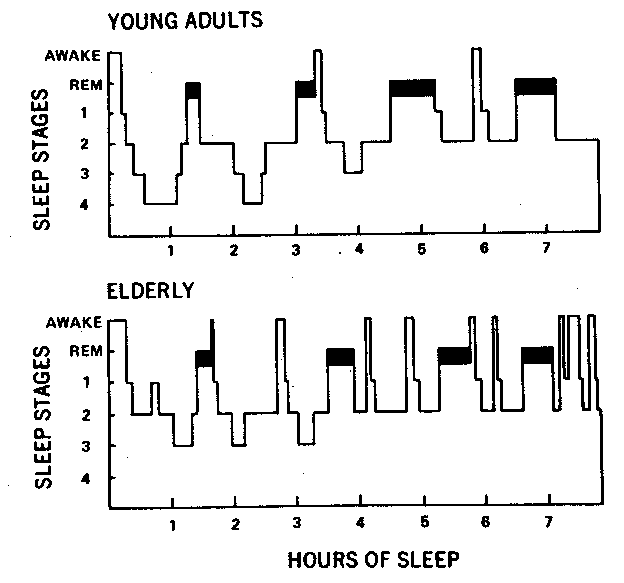

Cautionary remarks
It must be emphasized that in all of the foregoing, averaging has occurred and that individual differences, which are often quite pronounced, have been ignored. For example, the curve of a "typical" night of sleep, shown at the beginning of this section, is one derived from a large number of sleepers and deviations from it are almost the rule, rather than an exception. Moreover, some persons are able to sleep only 2 hours a night and are content that way, while most others require 7 to 8 hours of sleep a night, depending on how old they are, for optimal functioning.

Previous section Next section List of sections List of chapters